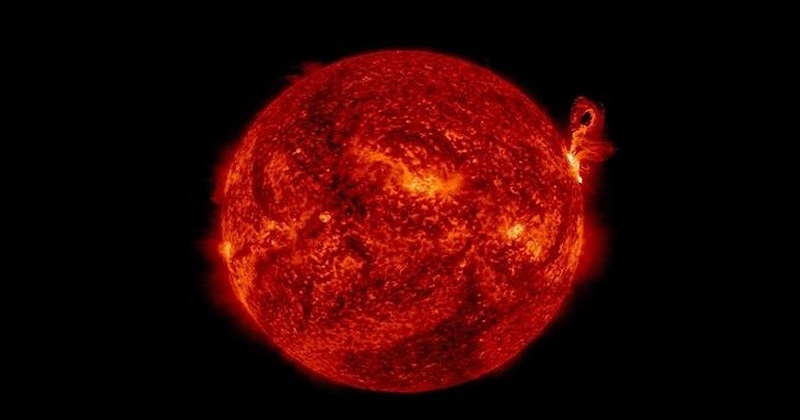
Earth may experience auroras in the next days as a result of a series of Sun outbursts. AR2929, a sunspot, has released two solar flares, as well as coronal mass ejections. Despite the fact that none of the ejections was aimed at Earth, they may send glancing impacts to our planet’s atmosphere, resulting in mild geomagnetic storms.
The initial flare occurred at 5:44 pm UT on January 18 and was classified as an M1.5 class flare. The second erupted at 6:01 am UT on January 20. It was more powerful, clocking in at M5.5. Both are classified as mid-level flares, meaning they aren’t the most intense activity our Sun can produce, but they are powerful enough to have an impact on Earth.
A rush of X-rays ionised the top of Earth’s atmosphere in both flares, creating brief, small short-wave radio blackouts over South America and the Indian Ocean, respectively.
Coronal mass ejections (CMEs) are large ejections of up to billions of tonnes of plasma from the solar corona, carrying an embedded magnetic field. CMEs are created by magnetic field lines snapping and reconnecting. These are common in conjunction with solar flares, and they move outwards from the Sun, taking many days to reach Earth if they are heading in our direction.
They can still strike a glancing hit. That’s what the two CMEs from AR2929 would look like. The resulting geomagnetic storms will be minimal, with only mild power grid fluctuations, radio communications deterioration, and space operations disruptions.
When charged particles from the CME impact and interact with Earth’s atmosphere and magnetic field, beautiful lights may be seen at high latitudes.
Also Read: Dharamsala-McLeodganj ropeway opens, cuts travel time by 40%
The Sun’s magnetic field, which flips every 11 years with the north and south magnetic poles swapping places, provides the basis for this cycle. The exact cause of these cycles is unknown (new research thinks it has something to do with an 11.07-year planetary alignment), but the poles switch when the magnetic field is lowest, commonly known as the solar minimum.
Sunspots (temporary regions of strong magnetic fields), solar flares, and coronal mass ejections are all controlled by the Sun’s magnetic field, hence the solar minimum manifests as a time of reduced activity. The solar activity progressively increases once the poles have switched, reaching its peak when the Sun is at its most active state.
The most recent solar minimum occurred in December 2019. We are presently in the ramp-up phase, with a solar maximum expected in July 2025.

Post Your Comments